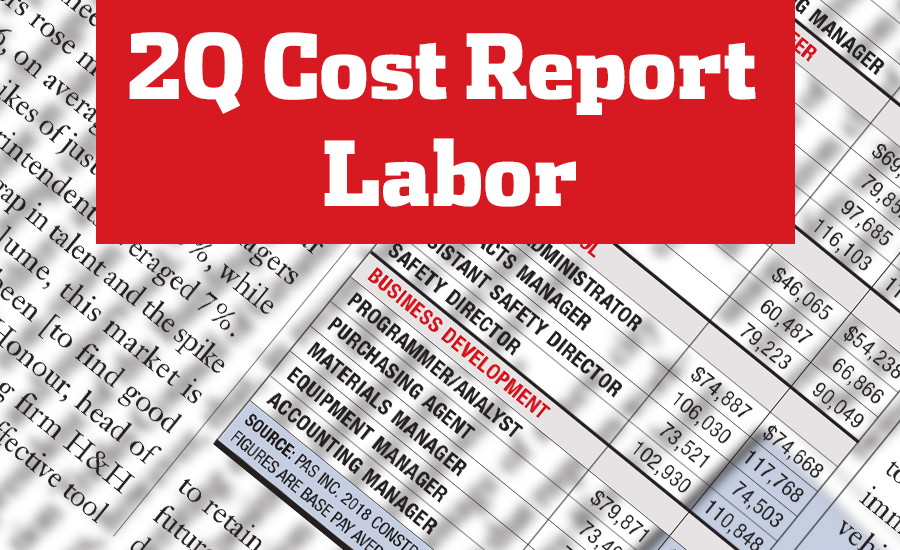Salary increases for construction staff remain strong in light of continued demand. Construction companies are particularly generous as they push to keep superintendents and estimators on payroll and recruit new talent.
Survey respondents predict increases of about 3.5% this year, according to the annual compensation survey by consultant Personnel Administration Services. Overall salary increases have stayed steady in recent years—averaging 3.7% in three of the last four years. But Jeff Robinson, PAS president, says that despite the firms’ reported number, he expects raises could approach 4% in 2019.
Similarly, Robinson notes that the 3.6% projected 2019 salary increase for construction by general business compensation forecaster World at Work is a notable change from recent past reports that predicted hikes of about 3.1%. “World at Work typically surveys the larger firms,” he says. “So for them to see a half-percent jump makes me more confident that we could see 4% this year.”
|
Related Link |
Economists are concerned about a potential financial downturn ahead, but Robinson says he expects to see similar trends in compensation continue into 2020. “Even if the economy starts to turn, you can guarantee base pay will still go up,” he says. “It would have to be another 2008 situation for that not to happen.”
Most staff positions are seeing a good bump in annual salaries, but demand for superintendents generated an average 6.6% hike in 2018. They “are the ones who know how it all gets built … and make money for companies,” he says. “If you need those key people, you have to pay them well.” Recruiter James Huddleston, president of ProSearch Intl., says many companies struggle in searches, especially for supers with experience on complex projects or with structural concrete. For such prospects, “we can find opportunities in the $135,000 to $170,000 range,” he says, noting that those willing to join another employer can often expect to see 10% to 15% salary increases.
Huddleston says younger candidates with good job experience can move up quickly. “Clients are interested in skill set,” he says, pointing to candidates managing five- to eight-person crews on complex jobs. “There are immediate opportunities for front-line people who know how to push production and understand scope and safety standards,” Huddleston says.
Megan Morris, vice president of recruiter Adams Consulting Group, agrees that clients are more willing to consider younger candidates. “They might want five years of experience, but would look at someone with three years and good projects under their belts,” she says.
Morris says that one growing trend in hiring and recruiting that may be reflected in compensation is an interest in work-life balance, especially among younger employees. Morris says that she has been able to move several candidates to companies closer to their homes, even with a similar salary.
“I’ve helped people cut their drive time by two or three hours per day,” she says. “That’s a big shift. It’s a situation where, do you want another $20,000 or would you like to see your family more?”
Work-life balance is a growing part of Huddleston’s pitch to meet high demand for estimators, which saw average salary increases of about 6% last year, according to PAS data. He tells candidates they can control that balance better in an estimating career than “staying in the field, where you’re married to the project and have to travel to where the work is.”



.jpg?height=200&t=1640294268&width=200)

Post a comment to this article
Report Abusive Comment